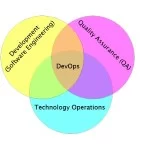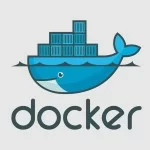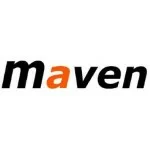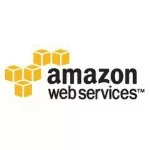From Chaos to Calm: How the DevOps Toolchain Tames Development
Is your development process plagued by silos, communication breakdowns, and slow releases? You’re not alone. Traditional development workflows can be chaotic, hindering productivity and innovation. But fear not! The DevOps toolchain emerges as a hero, bringing order and efficiency to the development landscape.
This guide will delve into how the DevOps toolchain acts as a bridge between development and operations, fostering collaboration and automation. We’ll explore how these tools tame the development beast, leading to:
- Faster Releases: Streamlined workflows and automated processes accelerate delivery cycles.
- Improved Quality: Continuous integration and testing ensure a higher quality codebase.
- Enhanced Collaboration: Shared visibility and communication tools break down silos, fostering teamwork.
- Reduced Errors: Automation minimizes human error and streamlines troubleshooting.
Get ready to discover how the DevOps toolchain can transform your development process, bringing calm and efficiency from the throes of chaos. Let’s embark on this journey together!
1. What is the DevOps Toolchain?
Imagine a development process plagued by isolated teams, communication breakdowns, and slow releases. This, unfortunately, is the reality for many development workflows. Traditional approaches often create silos between development and operations, leading to inefficiencies and frustration. But there’s a beacon of hope! Enter the DevOps toolchain, a game-changer designed to tame this development chaos.
The DevOps toolchain is a comprehensive suite of tools and practices that bridges the gap between development (Dev) and operations (Ops). Its core principles lie in collaboration and automation. By fostering collaboration between development and operations teams, the DevOps toolchain breaks down silos and promotes a shared understanding of the development lifecycle. This allows for a more holistic approach, where everyone works together towards a common goal – delivering high-quality software faster.
Automation sits at the heart of the DevOps philosophy. The toolchain integrates a series of automated processes, eliminating manual tasks and streamlining the development workflow. This includes automating tasks like building code, running tests, and deploying applications. By minimizing human intervention, automation reduces errors and ensures consistency throughout the development process.
The benefits of a DevOps approach are undeniable. Faster releases become a reality as automated workflows accelerate delivery cycles. Improved quality is achieved through continuous integration and testing, which identify bugs early in the development process. Teams experience enhanced collaboration thanks to shared tools and visibility, fostering better communication and teamwork. Finally, reduced errors are realized through automation, minimizing human error and simplifying troubleshooting.
The DevOps toolchain, with its emphasis on collaboration and automation, effectively breaks down silos and ushers in a new era of streamlined development. It paves the way for faster releases, higher quality software, and ultimately, a more efficient and productive development environment.
2. Key Components of the DevOps Toolchain
The magic of the DevOps toolchain lies in its collection of powerful tools, each playing a crucial role in streamlining development. Let’s delve into some key components:
- Version Control Systems (VCS) – Like a Time Machine for Your Code: Imagine a tool that tracks every change made to your code, allowing you to rewind and see any previous version. That’s exactly what a VCS like Git does. It acts as a central repository, storing all code versions and enabling collaboration. Multiple developers can work on the same codebase simultaneously, knowing that VCS keeps a clear history of changes. This allows for easy rollbacks if needed and simplifies merging different code contributions.
- Continuous Integration (CI) – Building and Testing on Autopilot: Imagine a tireless robot that automatically builds and tests your code every time a change is committed. That’s the magic of CI! CI tools like Jenkins automate the process of building your code, running automated tests, and notifying developers of any issues. This allows for early detection of bugs, preventing them from creeping into later stages of development. CI acts like a safety net, ensuring the code remains functional with every change.
- Continuous Delivery/Deployment (CD) – Hitting the Release Button with Confidence: CD takes things a step further from CI. Once the CI pipeline confirms code health through testing, CD automates the deployment process itself. This might involve pushing the code to a staging environment for final testing or directly deploying it to production. CD streamlines the release process, allowing for frequent and reliable deployments without manual intervention. Imagine deploying updates multiple times a day, all thanks to the power of automation!
- Configuration Management Tools – No More Manual Server Setup: Imagine managing dozens of servers, each requiring the same configuration settings. Yikes! Configuration management tools like Ansible or Chef come to the rescue. These tools automate the process of provisioning and configuring servers, ensuring consistency and reducing the risk of errors from manual setup. They define the desired state of your infrastructure (what software needs to be installed, what settings need to be configured) and automate the process of achieving that state on any server.
- Monitoring and Logging Tools – Keeping an Eye on Your Application’s Pulse: Just like a doctor monitors your health, these tools keep a watchful eye on your application’s performance. They collect logs, track errors, and provide real-time insights into application health. This allows developers to proactively identify and address issues before they impact users. Imagine getting alerts if a specific server starts showing performance issues or if a particular error rate spikes. This proactive approach helps maintain a healthy and stable application.
These are just a few of the essential components in the DevOps toolchain arsenal. By working together, these tools automate tasks, improve collaboration, and ultimately lead to a smoother and more efficient development process.
3. The DevOps Toolchain: Benefits Unpacked
The magic of the DevOps toolchain goes beyond just fancy tools. It’s about the significant benefits it brings to the development process. Here’s a closer look at how the DevOps approach empowers teams to achieve:
1. Faster Releases:
Imagine a world where deploying new features doesn’t involve a complex, time-consuming process. That’s the reality with DevOps! CI/CD pipelines are the secret sauce. Here’s how they work:
- Automation is King: Every time a developer commits code changes, the CI/CD pipeline automatically kicks in. This pipeline automates tasks like building the code, running tests, and packaging it for deployment. No more manual intervention or waiting for someone else to handle these steps.
- Streamlined Workflow: With automation removing manual bottlenecks, the entire development and deployment process becomes significantly faster. Developers can commit changes more frequently, knowing the CI/CD pipeline will seamlessly handle the rest. This leads to a faster release cycle, allowing teams to deliver new features and bug fixes to users much quicker.
2. Improved Quality:
Traditionally, catching bugs often happened late in the development cycle, leading to costly fixes and delays. DevOps changes the game with continuous integration and testing:
- Early Bug Detection: CI pipelines integrate code changes from different developers frequently. As part of this integration, automated tests are run on the code. These tests identify bugs early on, often right after the code is written. This allows developers to fix them quickly, preventing them from lingering undetected and causing bigger problems later.
- Shifting Left: The DevOps approach encourages a “shift-left” mentality. This means focusing on testing and quality assurance earlier in the development process, rather than waiting until the very end. By catching issues early and often, the DevOps toolchain ensures a higher quality codebase overall.
3. Enhanced Collaboration:
DevOps fosters a culture of collaboration by breaking down silos between development, operations, and other teams:
- Shared Tools and Visibility: Everyone involved in the development process has access to the same tools and information. This includes code repositories, CI/CD pipelines, and monitoring dashboards. This shared visibility allows teams to see the bigger picture, understand each other’s work, and communicate more effectively.
- Breaking Down Silos: By working with the same tools and having a shared understanding of the development process, teams are no longer isolated entities. Developers can easily identify potential issues that might impact operations, and operations teams can provide valuable feedback to developers. This fosters a collaborative environment where everyone works together towards a common goal.
4. Reduced Errors:
Human error is an inevitable part of software development. However, the DevOps toolchain helps minimize its impact:
- Automation Power: By automating repetitive and manual tasks, the DevOps toolchain significantly reduces the risk of errors caused by human intervention. Imagine accidentally deploying the wrong version of code – with automation, such mistakes become a thing of the past.
- Simplified Troubleshooting: When issues do arise, the automated tools in the DevOps toolchain provide valuable insights. Monitoring tools pinpoint where the problem might be occurring, and configuration management tools ensure consistency across environments, making it easier to isolate the root cause. This simplifies troubleshooting and reduces the time it takes to resolve issues.
4. Building Your DevOps Toolkit: Tools and Culture
The power of the DevOps toolchain is undeniable, but getting started requires careful planning and the right approach. Here’s a breakdown of selecting tools, fostering a DevOps culture, and overcoming potential challenges:
Selecting and Integrating DevOps Tools:
- Understanding Your Needs: There’s no one-size-fits-all solution. Identify your specific needs and choose tools that address your development workflow and team size.
- Research and Experiment: Don’t be afraid to explore different options! Many tools offer free trials or open-source versions. Experiment with a few to find what works best for your team.
- Focus on Integration: Ensure the chosen tools integrate seamlessly with each other. A smooth flow of information between tools is crucial for a streamlined workflow.
Best Practices for Adopting a DevOps Culture:
- Communication is Key: Encourage open communication between development, operations, and other teams. Break down silos and foster a collaborative environment.
- Collaboration is King: DevOps thrives on teamwork. Organize workshops and share knowledge across teams to build a shared understanding of the development process.
- Continuous Learning: The DevOps landscape is constantly evolving. Encourage your team to embrace continuous learning and stay updated on the latest tools and methodologies.
Potential Challenges and How to Address Them:
- Cultural Shift: Transitioning to a DevOps culture can be challenging. Address concerns, provide training, and emphasize the long-term benefits.
- Tool Complexity: Managing a variety of tools can be overwhelming. Start small, focus on core functionalities, and gradually integrate additional tools as needed.
5. Conclusion
The DevOps toolchain isn’t just a collection of tools; it’s a philosophy. By automating tasks, promoting collaboration, and prioritizing quality, it tames development chaos, leading to:
- Faster Releases: Deploy features and fixes quicker with streamlined workflows.
- Improved Quality: Catch bugs early with continuous testing for a more reliable codebase.
- Reduced Errors: Minimize human error and simplify troubleshooting with automation.
But remember, the key to success lies in fostering a DevOps culture:
- Communication: Open and honest communication across teams is essential.
- Collaboration: Break down silos and work together towards shared goals.
- Continuous Learning: Embrace ongoing learning to stay up-to-date.
The future of DevOps is bright, with trends like IaC and containerization further automating infrastructure management.
Ready to tame development chaos? Explore the DevOps toolchain and its principles. Embrace a collaborative culture and the right tools to unlock a smoother, more efficient development process. Start your journey today!








